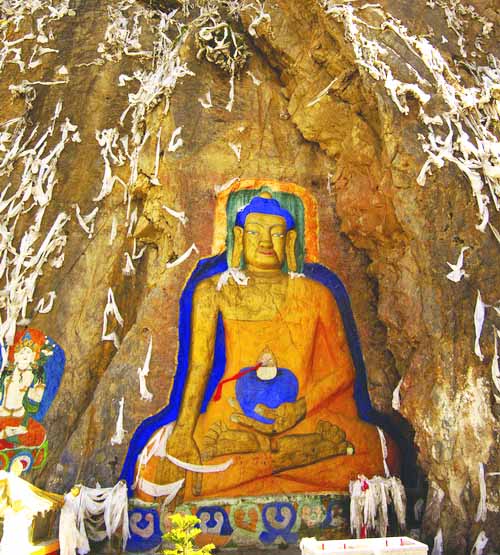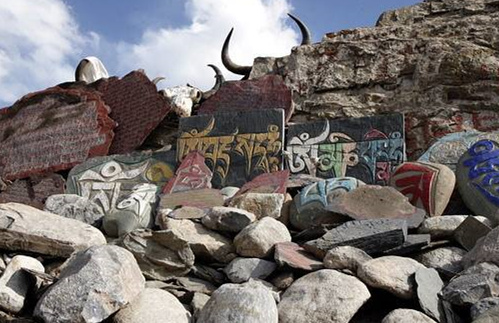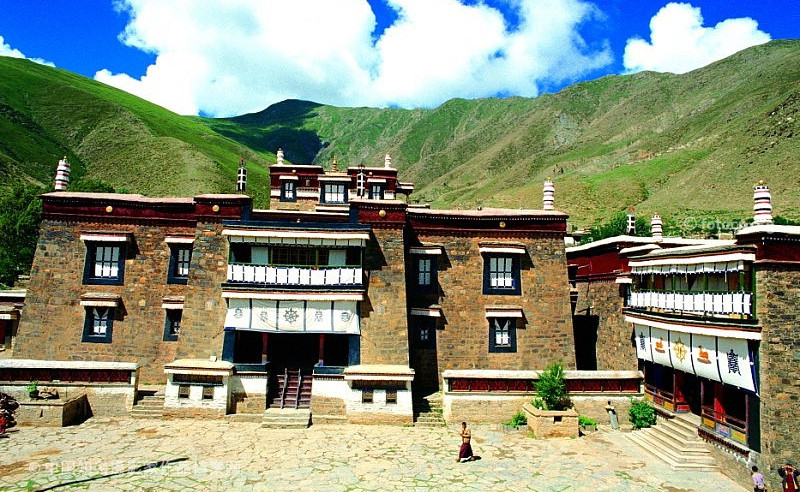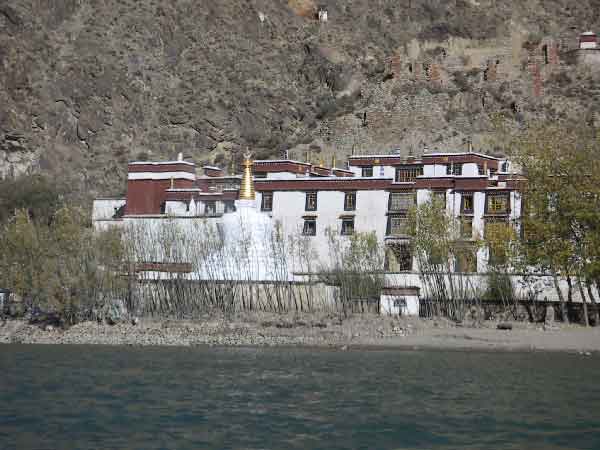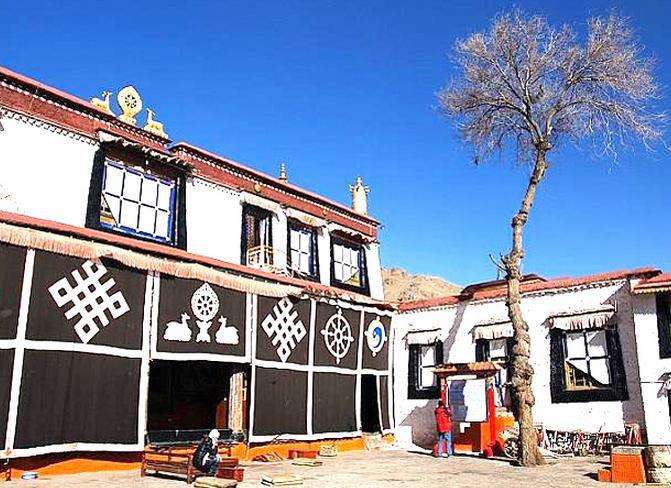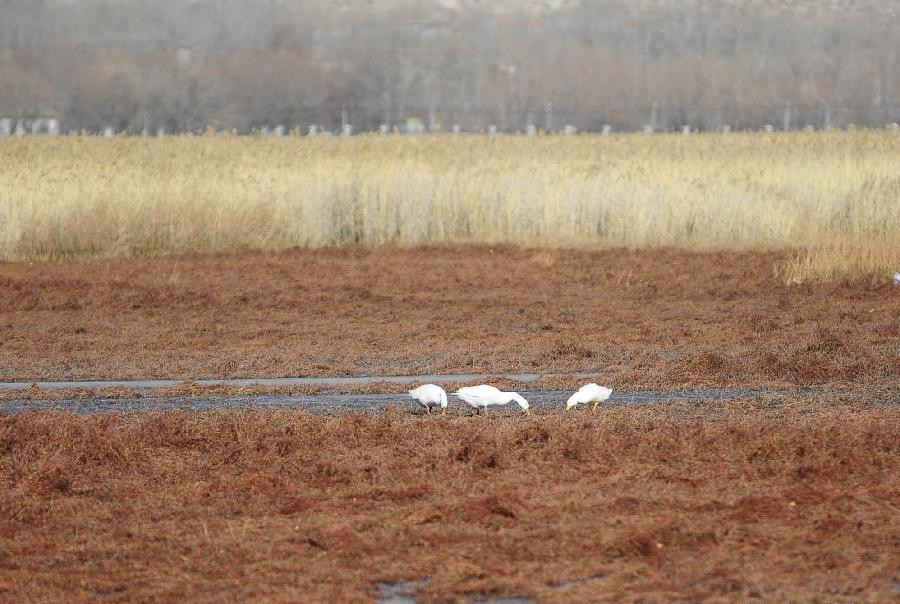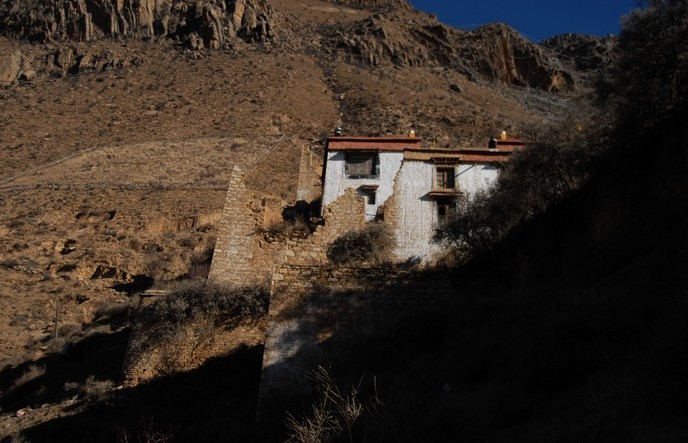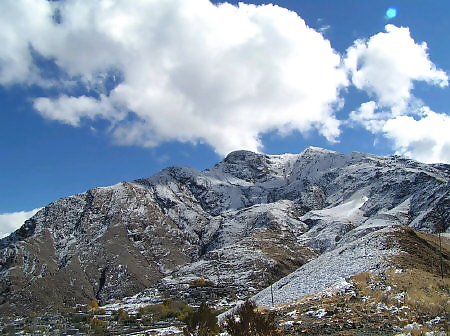Potala Palace
This architectural wonder is Lhasa's
Upon entering the East Portal, visitors will come into the Deyang Shar courtyard where Dalai Lamas watched Tibetan  opera. West of the courtyard is the White Palace. As the winter palace of Dalai Lamas, the White Palace is a seven-floor building originally built in 1645. The wall of the palace was painted to white to convey peace and quiet. The Great East Hall on the fourth floor is the largest hall in White Palace, occupying a space of 717 sq meters (about 7,718 sq ft). This hall was also the site for holding momentous religious and political events. The living quarters and offices of regents are on the fifth and sixth floors and while the top floor consists of the East Chamber of Sunshine and the West Chamber of Sunshine. Because of the sunshine in the chambers all year round, the East and West Chamber were the places where Dalai Lamas lived, worked and studied. The furnishings are sumptuousness and comfortable, revealing the dignity of Dalai Lamas. Standing on the spacious balcony, visitors can look down on beautiful Lhasa.
opera. West of the courtyard is the White Palace. As the winter palace of Dalai Lamas, the White Palace is a seven-floor building originally built in 1645. The wall of the palace was painted to white to convey peace and quiet. The Great East Hall on the fourth floor is the largest hall in White Palace, occupying a space of 717 sq meters (about 7,718 sq ft). This hall was also the site for holding momentous religious and political events. The living quarters and offices of regents are on the fifth and sixth floors and while the top floor consists of the East Chamber of Sunshine and the West Chamber of Sunshine. Because of the sunshine in the chambers all year round, the East and West Chamber were the places where Dalai Lamas lived, worked and studied. The furnishings are sumptuousness and comfortable, revealing the dignity of Dalai Lamas. Standing on the spacious balcony, visitors can look down on beautiful Lhasa.
In the middle of the Potala Palace the Red Palace exists. Built in 1690 after the death of the Fifth Dailai Lama, the wall of the palace was painted to red, representing stateliness and power. The Red Palace is renowned for its religious status, gorgeous stupas and precious culture relics. The Great West Hall in the middle is the largest  hall of Potala Palace with an area of 725 sq meters (about 7,804 sq ft). Beautiful murals painted on inner walls described the glory and power of the Fifth Dalai Lama, and the corridor upstairs is also painted by many religious murals such as the figures of Buddhas, Bodhisattvas and Dalai Lamas; the genetic stories of Buddhism; the historical events such as marrying Princess Wencheng and building Jokhang Temple. One of the most famous murals described the Fifth Dalai Lama's visit to Emperor Shunzhi in Beijing in1652. There are another three chapels around the Great West Hall. The North Chapel is dedicated to Sakyamuni, Dalai Lamas, Buddhas of Three Generations and Medicine Buddha. The stupa-tombs of the Eighth, Ninth and Eleventh Dalai Lama are also situated here. Besides, Visitors can also find a volume of Kanjur (Beijing Edition) donated by Emperor Yongzheng on the bookshelf. The East Chapel is consecrate to Tsong Khapa, founder of the Yellow Hat Sect. His two-meter-high (6.56 ft) figure is surrounded by other 70 statues of famous lamas. The South Chapel is dedicated to Padmasambhava, a famous Indian monk who introduced Esoteric Buddhism to Tibet in eighth century. To the west of the Great West Hall is the Stupa Chapel where the stupa-tombs of the Fifth, the Tenth and the Twelfth Dalai Lamas are situated in. With a height of 14.85 meters (about 48.72 ft), covered by more than 3,000 kilograms (about 6,613pounds) gold foil and decorated with thousands of pearls, gems, corals, ambers and agates, the Fifth Dalai Lama's stupa-tomb is regarded to be the highest and the most luxury one. The Three-world Hall, which is located on the highest point of Potala Palace, is the holy shrine of Chinese Emperors. It was built in 1690 and Dalai Lamas used to come here to show their respect to the central government every year.
hall of Potala Palace with an area of 725 sq meters (about 7,804 sq ft). Beautiful murals painted on inner walls described the glory and power of the Fifth Dalai Lama, and the corridor upstairs is also painted by many religious murals such as the figures of Buddhas, Bodhisattvas and Dalai Lamas; the genetic stories of Buddhism; the historical events such as marrying Princess Wencheng and building Jokhang Temple. One of the most famous murals described the Fifth Dalai Lama's visit to Emperor Shunzhi in Beijing in1652. There are another three chapels around the Great West Hall. The North Chapel is dedicated to Sakyamuni, Dalai Lamas, Buddhas of Three Generations and Medicine Buddha. The stupa-tombs of the Eighth, Ninth and Eleventh Dalai Lama are also situated here. Besides, Visitors can also find a volume of Kanjur (Beijing Edition) donated by Emperor Yongzheng on the bookshelf. The East Chapel is consecrate to Tsong Khapa, founder of the Yellow Hat Sect. His two-meter-high (6.56 ft) figure is surrounded by other 70 statues of famous lamas. The South Chapel is dedicated to Padmasambhava, a famous Indian monk who introduced Esoteric Buddhism to Tibet in eighth century. To the west of the Great West Hall is the Stupa Chapel where the stupa-tombs of the Fifth, the Tenth and the Twelfth Dalai Lamas are situated in. With a height of 14.85 meters (about 48.72 ft), covered by more than 3,000 kilograms (about 6,613pounds) gold foil and decorated with thousands of pearls, gems, corals, ambers and agates, the Fifth Dalai Lama's stupa-tomb is regarded to be the highest and the most luxury one. The Three-world Hall, which is located on the highest point of Potala Palace, is the holy shrine of Chinese Emperors. It was built in 1690 and Dalai Lamas used to come here to show their respect to the central government every year.
In 1994, the palace joined the list of world cultural heritage sites. It is a must to see for your Tibet tours.
Potala Kora
The pilgrim path that encircles the foot of the Potala makes for a nice walk before or after a visit to the main event. There are many pilgrims, especially in the morning. From the western chorten (formerly the western gate to the city), follow the prayer wheels to the northwest corner, marked by three large chortens.
The northeast corner is home to several rock paintings and a delightful prayer hall occupied by nuns. Just past here, spin the large prayer wheel of the Phurbu Chok Hermitage Mani Lhakhang and then swing past the Chinese-style square, where pilgrims often prostrate in front of the Potala. Look out fro the three 18th-century doring(stele); the two to the north side of the road commemorate victories over the Central Asian Dzungars (left) and Nepali Gorkhas (right). The single southern obelisk is said to have been erected by King Trisong Detsen in the eighth century.
past here, spin the large prayer wheel of the Phurbu Chok Hermitage Mani Lhakhang and then swing past the Chinese-style square, where pilgrims often prostrate in front of the Potala. Look out fro the three 18th-century doring(stele); the two to the north side of the road commemorate victories over the Central Asian Dzungars (left) and Nepali Gorkhas (right). The single southern obelisk is said to have been erected by King Trisong Detsen in the eighth century.


